Quick Summary
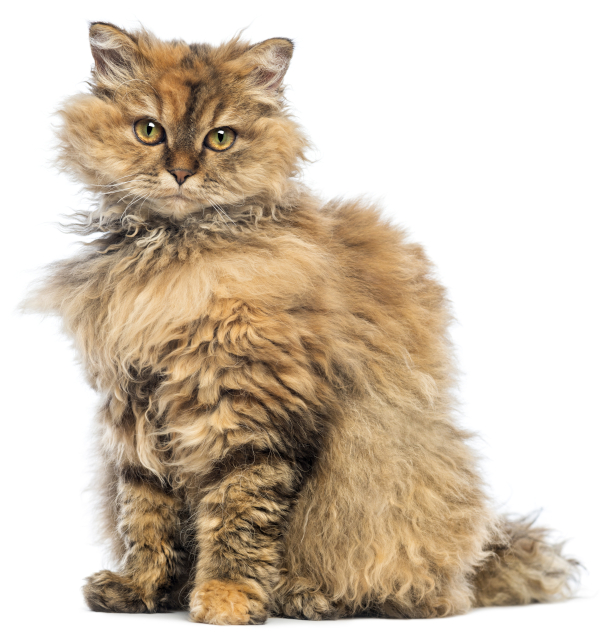
Click here for Price and Turnaround Time
Phenotype: The Selkirk Rex has a coat of curled hair that can be short or long. A single copy of the variant that causes the Selkirk Rex coat produces wavy hair, and two copies produce a tighter curl as well as a slender body type with long ears.
Mode of Inheritance: Autosomal incomplete dominant
Alleles: N = Normal coat, SLK = Selkirk Rex coat
Breeds appropriate for testing: Selkirk Rex
Explanation of Results:
- Cats with N/N genotype will not have a Selkirk Rex coat and cannot transmit this Selkirk Rex coat variant to their offspring.
- Cats with N/SLK genotype will have a Selkirk Rex coat with a wavy texture (heterozygous for the trait). They will transmit this Selkirk Rex coat variant to 50% of their offspring, and those offspring will exhibit a Selkirk Rex coat.
- Cats with SLK/SLK genotype will have a Selkirk Rex coat with a tighter curl (homozygous for the trait). They will transmit this Selkirk Rex coat variant to all of their offspring, and all of their offspring will exhibit a Selkirk Rex coat.
Cat DNA tests are carried out using cells brushed from your cat's cheeks and gums using household cotton swabs.
The cat DNA submission form with instructions and a place to tape the cotton swabs is sent to you via email after you place an order, and can be printed from your home computer. DNA test kits are no longer mailed.
Instructions
Step-By-Step:
1.
 Purchase regular household cotton swabs for cat DNA collection (the cotton swabs can be purchased at a pharmacy or drug store)
Purchase regular household cotton swabs for cat DNA collection (the cotton swabs can be purchased at a pharmacy or drug store)
2.
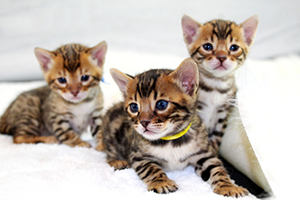
Make sure the cat has not had anything to eat or drink for at least 1 hour prior to collecting sample.
When swabbing kittens, isolate each kitten from the mother, littermates and any shared toys for 1 hour prior to swabbing. Kittens should not have nursed or eaten for 1 hour prior to collecting sample.
If collecting samples from more than one cat, make sure to sample one cat at a time and wash your hands before swabbing another cat.
3.
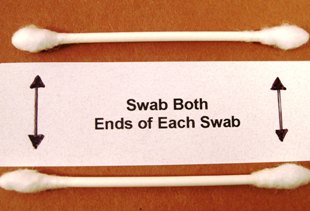 Use both ends of the two cotton swabs for a total of four swabs.
Use both ends of the two cotton swabs for a total of four swabs.
4.
Place the cotton head of the swab between the cat’s gums and cheek and rub or rotate the swab back and forth for 15 seconds. Repeat with each cotton swab head, for a total of 4 swabs. We recommend swabbing a different area of the gums with each swab head.
5.
Wave the swab in the air for 10-15 seconds to air dry it before attaching it to the submission form.
6.
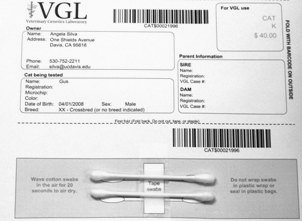 After swabbing the cheek and gums, tape the cotton swabs to the bar-coded submission form printed from your MyVGL account.
After swabbing the cheek and gums, tape the cotton swabs to the bar-coded submission form printed from your MyVGL account.
ATTENTION:
- Do not collect saliva/drool – the key to obtaining a good sample is getting cheek cells on the swab.
- Do not rub swab on the cat’s tongue or teeth – this will result in poor quality sample.
- Do not collect a sample from a kitten that has recently nursed – the mother’s genetic material can rub off on the kitten’s mouth and contaminate the sample.
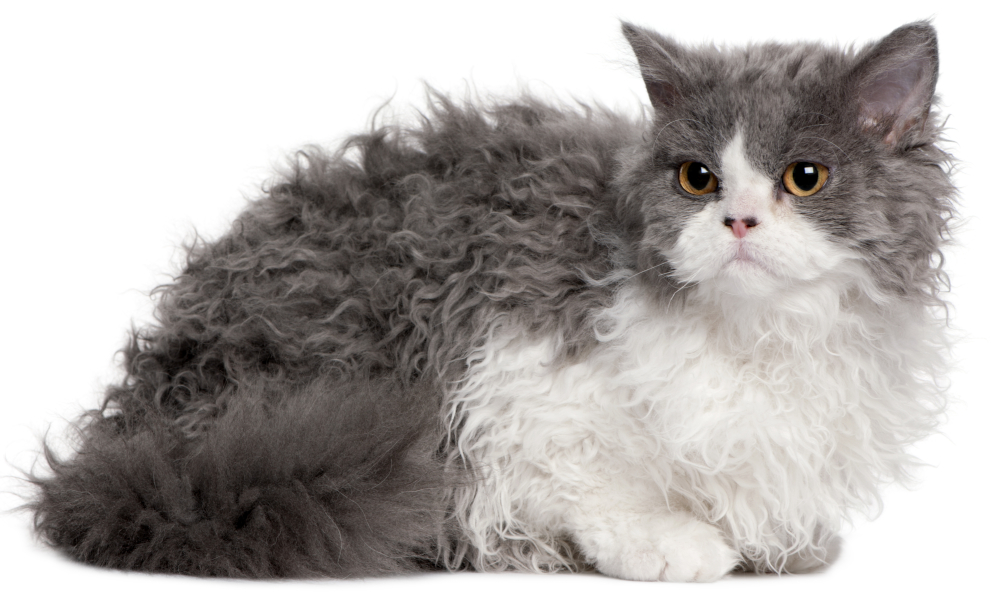
A dominant mutation that causes the curly coat in the Selkirk Rex breed has been identified. The variant behaves as an incomplete dominant; that is, one copy produces cats with a wavy coat and two copies produce a tighter curl to the hair. Homozygous cats also have a slender body type with large ears. Cats that are heterozygous for the variant are favored over homozygous cats, due to a preference for the sturdy body type, smaller ears and wavy coat.
The mutation was discovered by Dr. Barbara Gandolfi of the Lyons Feline Genetics Research Laboratory at the University of California, Davis (now at University of Missouri). The mutation affects function of a gene crucial for hair formation and maintenance.
Testing for the Selkirk Rex mutation assists breeders to select cats that will produce offspring with the desired outcome.
